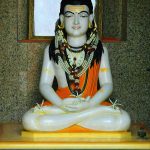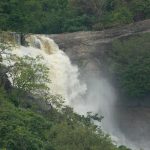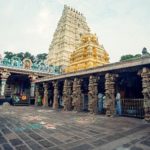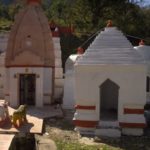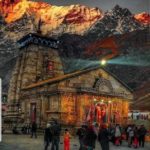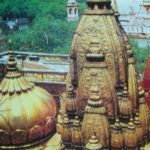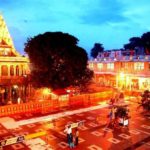Siddha Matsyendranath is a Yogi saint of the Hindu as well as Buddhist traditions. He was the revivalist of Hatha Yoga and also the founder of the Nath Sampradaya. Matsyedranath received knowledge from Lord Shiva himself and is associated with Kaula Shaivism. He is one of the 84 Maha Siddhas. Siddha Matsyendranath is the Guru of Gorakhnath. He is also regarded as an incarnation of Avalokiteshvara. The story of Siddha Matsyendranath is often told and retold in the form of stories as well as in films.
Birth And Early Life
There is not much known about the birth and early life of Siddha Matsyendranath. The Tibetan folklore and texts also describe him as associated with Lui-Pa the Lord of the Fishes. Tibetans consider him as the Avatar of Avalokiteshvara. He was a fisherman from Kamarupa which is the community of fishermen next to the Trikannad Trayambakeshwar Temple which is in Kerala. He is also said to be from Assam or North Bengal.
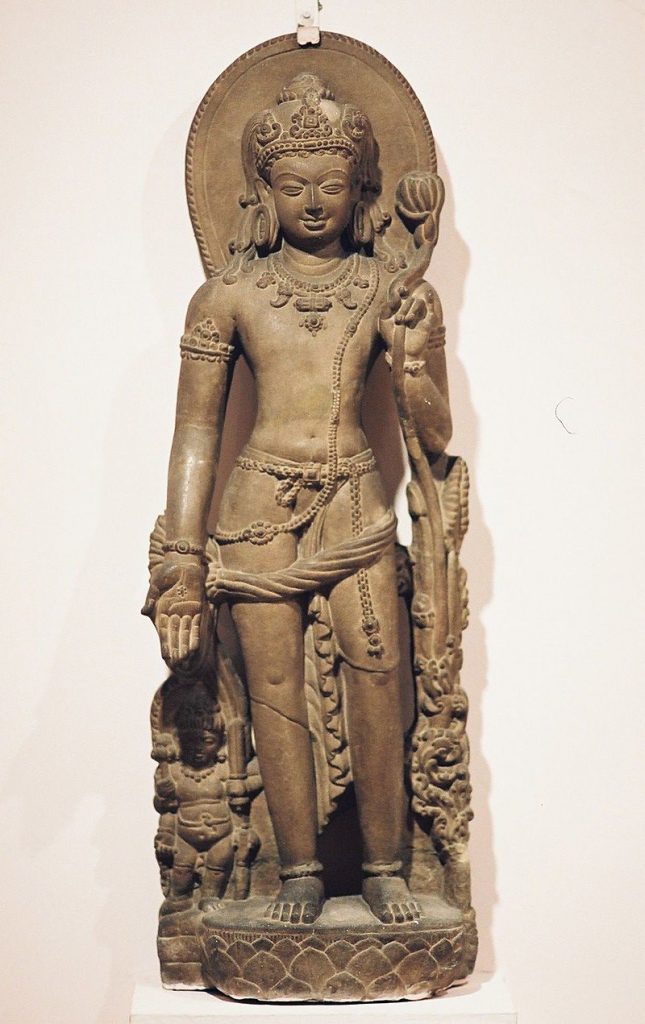
Image Source
History And Dates
Historians place Siddha Matsyendarnath between the 7th and 12th centuries. He lived in the time of King Narendra Deva who ruled from 640 AD to 683 AD. King Narendra Deva brought the deity of Machchhendra Nath from Kamarup in 647 A.D. So, this places Siddha Matsyendarnath in the middle of the 7th century. He also lived in the time of Saint Jnaneshwar which is around the 12th century.
Matsyendranath And The Fish
The legend of the birth of Siddha Matsyendranath is a very interesting story. He was born under an inauspicious star. His parents threw him into the ocean on account of this. A fish swallowed him and he lived in the belly of the fish. This fish then swam to the bottom of the ocean. Here, Lord Shiva was teaching the secrets of Yoga to Devi Parvathy. Siddha Matsyendranath learned all this divine knowledge from within the belly of the fish. He then started to practice the Sadhana of what he had learned inside the fish.
Siddha Matsyendranath emerged from the belly of the fish after 12 years. By then through his Sadhana he was an enlightened Siddha. This gave him the name of Lord of the Fishes. Another version of the legend states that he was born a fish and turned into a Siddha by the grace of Lord Shiva.
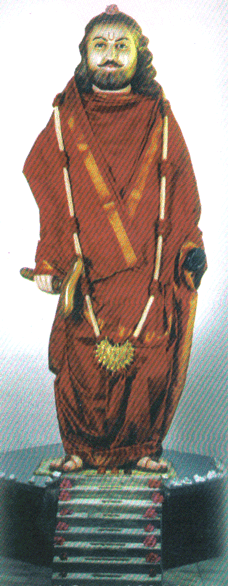
Image Source
Matsyendranath And The Brahma Virya
The Brahma Virya or sperm of Brahma is the source of the saints and great prophets on Earth. Unlike other beings, the sperm of Brahma can fertilise any living being. The Brahmam Virya also had the highest level of morality and principles. In the Kali Yuga Brahma decided that it was time to spread more moral values on Earth and he cast his Brahma Virya on the Earth. It fell into the mouth of a fish that was then pregnant.
At this time Lord Shiva and Devi Parvati were in deep conversation in a secluded spot. Lord Shiva was explaining the principles of creation to Devi Parvathy. The pregnant fish also happened to be at that spot. When Devi Parvathy asked Lord Shiva what the base of all illusionary creation was, the answer came from within the fish. The egg in the fish replied to Devi that it was Brahma Tatva or the God element that was the source.
Divine Knowledge
Lord Shiva was wonderfully surprised to hear the correct answer from within a fish. He recognised that the egg was the Kavi Narayan or poet form of Lord Vishnu. He blessed the child that he would receive his blessings at the age of 12. After some time the fish washed ashore in Maharashtra and birds were pecking at the egg that it carried. A fisherman couple saw this. The egg cracked and there was a baby within. They took the baby home and named him Machhindranath. Macchi means fish, Indra means God Indra and Nath translates as the Lord. So, he was named the Lord of the fishes.
Machindranath grew up. He was a very compassionate child and did not like to kill fish. His father rebuked him for throwing the fish that he caught back in the water. He worried that the child would be a beggar if he did not learn to fish. The young Machindranath told his father that he would rather beg and eat his food without sin than to kill the fish. He ran away from home and made his way to Badrinath. There he meditated while living only on fruits and water. He was only skin and bone. Lord Datta and Lord Shiva appeared to him. They taught him warfare and miracles to uplift and save mankind from the evils of Kali Yuga. He became a Siddha who could see from the beginning to the end of time.
Siddha Matsyendranath And The Rain Serpents
Once Gorakshanath visited Patan in Nepal. The people of Patan did not give him alms. He became very angry and captured all the rain-producing serpents of Patan. The place then faced a severe sustained drought. The wise men of Patan advised the King to invite Siddha Matsyendranath to Patan. When Gorakshanath saw that his teacher was there he immediately released the rain serpents and rushed off to see him. Patan had rain again. The people of Patan worshipped Siddha Matsyendranath as the God of Rain. Both Hindus and Buddhists in Nepal worship him as the rain god Bunga Dyah. The Hindus call him an incarnation of Shiva while to the Buddhists he is an incarnation of Avalokiteshvara.
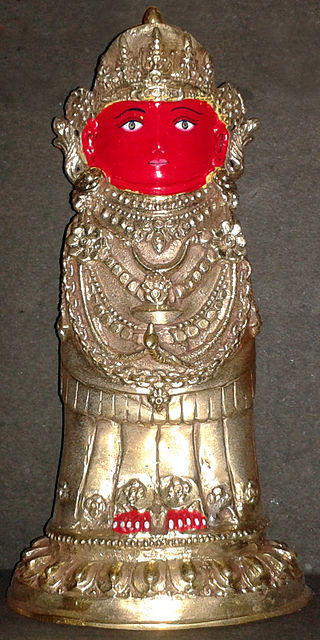
Image Source
Teachings
Matsyendranath wrote the Kaulajnananirnaya, Matsyendrasamhita and Akula Virantra which are works on Hatha Yoga and Tantra dating to the eleventh century. He had eight disciples but the names vary in different traditions. His disciples were Gorakshanath, Jalandharnath, Kanifnath (Kanhoba), Gahininath, Bhartri Nath, Revan Nath, Charpatinath and Naganath. With Sidda Matsyenranath the number is 9 and together they are the Navnath.
Mystical Powers
Siddha Matsyedranath is believed to be immortal and has supernatural powers. There are many legends of his miracles that are retold in Nepal and India. He destroyed the hold of time through Hatha Yoga. The Nath tradition reveres him as an Avatar of Lord Shiva. In Nepal, he is worshipped as Avalokiteshwara. He is able to achieve immortality by living in his own body and also entering the bodies of others and living there for long periods of time.
Matsyedranath is the master of magic as well as the occult sciences. He is also a great Tantric. A legend in Nepal recounts that he appeared as a great sorcerer and used magic to make the army of the King of Nepal powerless. The relationship between Siddha Matsyendranath and Gorakhnath is the ideal Guru-disciple relationship.
Some legends about Siddha Matsyedranath depict him as a fallen Yogi who was temporarily distracted by women. Gorakshanath rescued him from this. It is also said that he committed all his mistakes for the benefit of the world. He was unaffected by his actions.
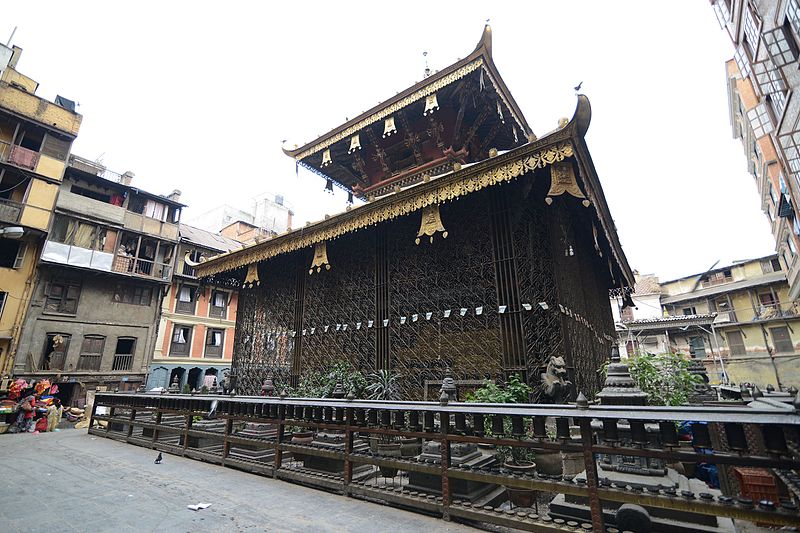
Image Source
Nine Nathas – Maya Swaroop
Siddha Matsyedranath is one of the Nine Nathas. He is called Maya Swaroopi or Maya Pati Dada. Maya Swaroopi translates as the form of Maya while Maya Pati is the master of Maya and illusion. He is less a person and more the universal Yogic power. So, when a person experiences Kundalini awakening the entire existence or Maya becomes the Guru.
Devotional folk song lyrics also mention the Nine Natha Yogis. They are usually a monologue between Siddha Matsyendra and his disciple Gorakhnath. The songs end with ‘Kahate Matsyendra Baba, suno Jati Goraksh,’ which translates as ‘Matsyendra Baba is saying, listen O perfect brahmachari Goraksh!’
The Machindranath Temple And Festival
The Hyang Machindranath temple is also called the Temple of Bunga Dyaa or Rato Machhindranath Temple. It dates to the 16th century and is located in the Patan Durbar Square. The statue of Rato Machindranath spends 6 months in this temple and the next 6 months in Bungamati. The people of Patan celebrate an annual festival of the rain Gods in April-May.
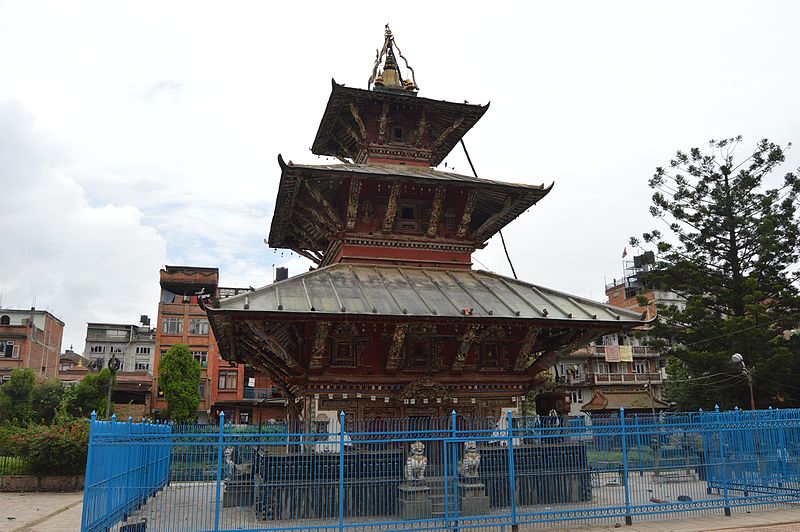
Image Source
It is one of the oldest festivals of the region and is held just before the Monsoon season. The deity of Bunga Dyah is given a sacred bath, It is then taken in stages through the streets of Patan. The chariot is made by the Barahi and Yawal clans without using any nails or iron except for the wheels. The festival ends with the Vest Festival when a sacred jewel-studded black vest is shown to the people. The deity is then taken to his second home in Bungamati.

Image Source
Other References To Siddha Matsyedarnath
The Dasam Granth describes a conversation between Matsyendarnath and Paras Nath as dictated by Guru Gobind Singh. It is on the topic of the Bibek or Intuitive and Abibek or Non-Intuitive Mind. Paras Nath was very egoistic because he had subdued many kings. However, the spiritual teachings of Matsyendarnath broke his ego.
There have also been films made on Siddha Matsyendarnath in India in Hindi, Marathi, Tamil as well as Telugu.




